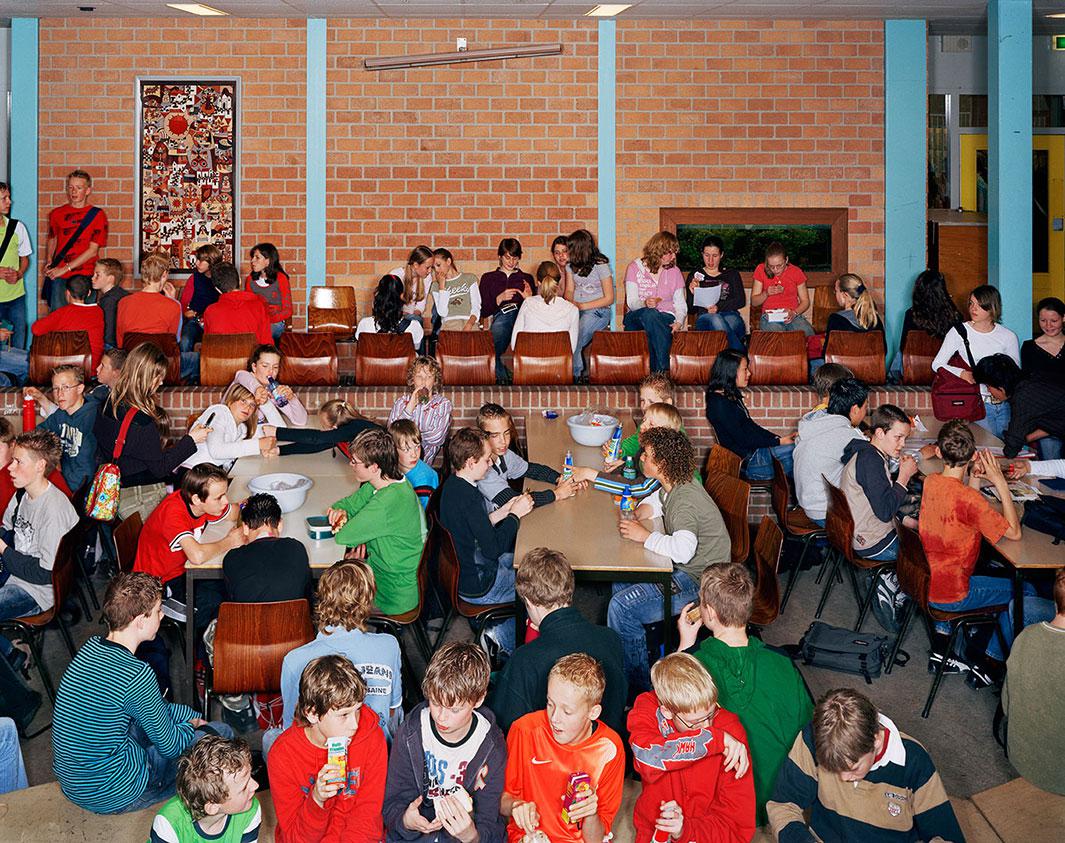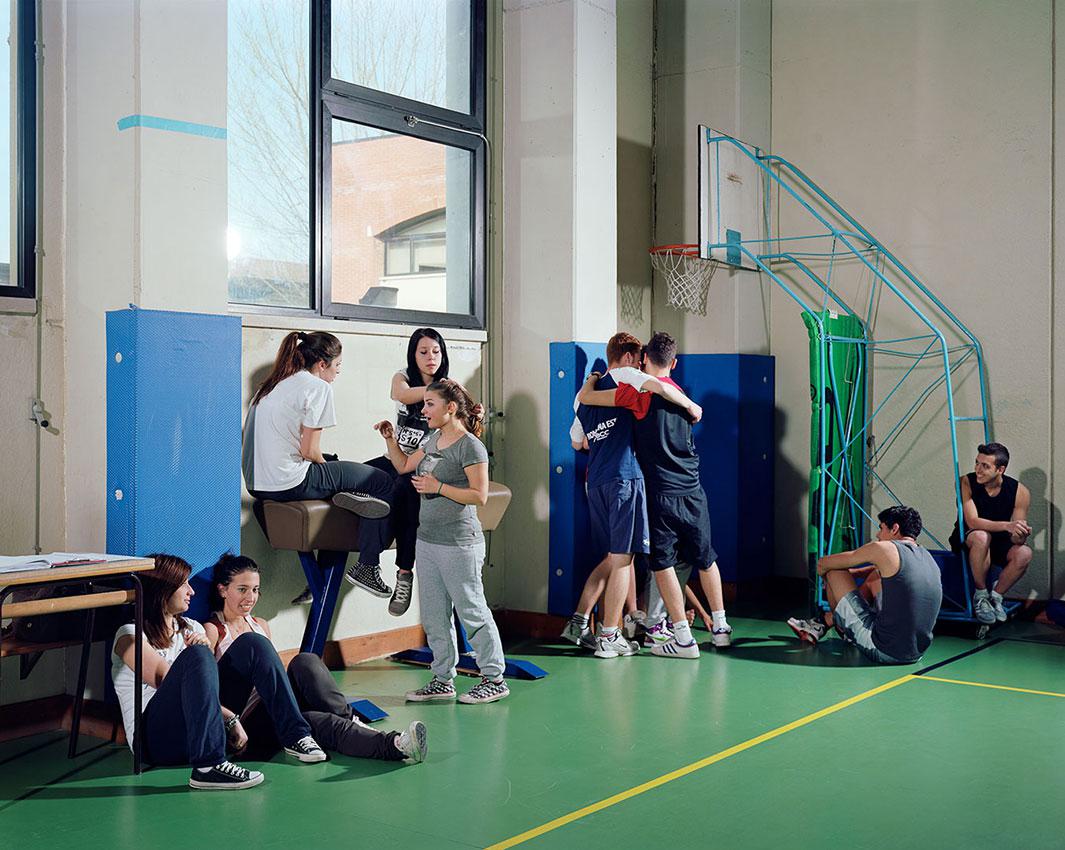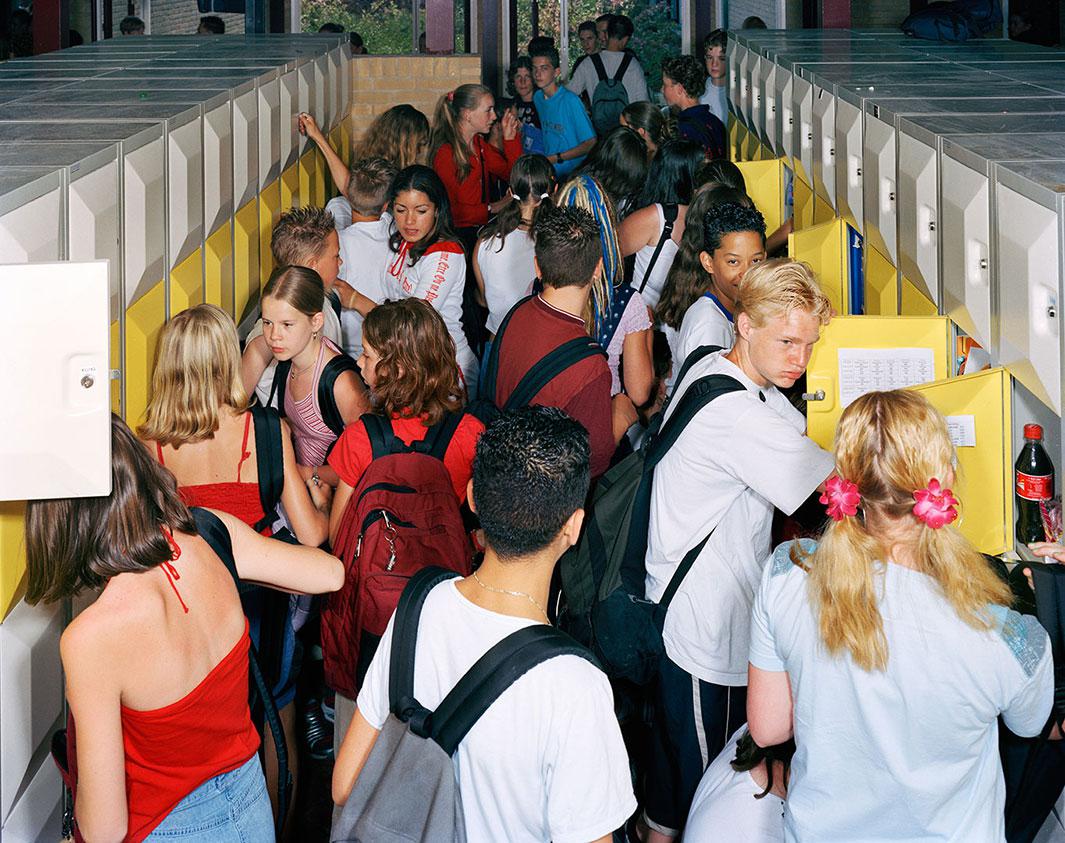While working in his Amsterdam studio across the street from a school, Raimond Wouda noticed a few different rituals from when he was a student. He decided to dig a bit deeper and, since 2002, he has photographed European schools in the Netherlands, Italy, and Poland.
When he began the project, the images were taken with a large-format film camera he fixed to a tripod on a ladder to get a high vantage point that showed more of what was happening. He shot remotely, focusing on the student interactions between classes as they mingled in the hallways, by their lockers, in cafeterias, and other group spaces. He repeated the process around the Netherlands for more than five years, eventually creating a book of the work, School, published by Nazareli Press.
“I thought because the environment was so typically Dutch, I didn’t expect other countries to be interested,” he said. But the opposite seemed to be the case. The work was exhibited just once in the Netherlands but in France, for example, it has been shown 34 times. He realized there was a larger audience attracted to the universality of the photos and began trying to document schools in Italy and Poland.

Raimond Wouda

Raimond Wouda

Raimond Wouda
But in a short period of time, a lot had changed, mainly, privacy laws in Europe that restricted Wouda’s access to take photos inside schools. In Italy, fore example, he had to get 1,500 signed permission sheets from parents in order to be able to photograph inside the schools. He also made agreements with the school directors to allow them right of refusal before he published any of the work. Wouda also said shooting with a film camera proved to be too expensive so he started shooing with a Phase 1 digital camera. Perhaps the biggest change, however, were the students themselves.
“Everyone takes pictures so they don’t give a damn if I’m there,” he said. “So I get more and more freedom once I’m in.”
While the interiors might look slightly different depending on which country Wouda is shooting, a lot of group dynamics remain fairly common.
“Sometimes you can see a loner in the photos although you really have to look carefully before you notice them,” he said. “You see the leaders of the pack, the shy girls, the boys who are a bit too big; you notice all these things, you see it and it hasn’t changed a lot to be honest. These rituals, they’re universal.”

Raimond Wouda

Raimond Wouda

Raimond Wouda
He said he noticed some violence and bullying while photographing in the Netherlands and Italy but said things were completely different in Poland, primarily because he said there were far less large communal spaces including a lack of traditional cafeterias.
“Sometimes they had a small canteen, but for the most part children were in the corridors, which were small and intimate,” he said. “There was a lot more intimacy between the children, everyone was very polite to each other, and not a lot of bullying. I heard that from the teachers as well and I think that is related to the fact they’re having a lot of small groups instead of larger ones that might trigger violence. I don’t know for sure but it was very friendly and I was surprised by that.”
Wouda said he would like to continue working on the series in other parts of Europe and the United States, specifically focusing on schools in Belgium that have both French and Flemish students or in Northern Ireland with Catholic and Protestant students. Regardless of the location, the anthropological aspect of the work keeps Wouda interested.
“I noticed I captured something that was photographed a lot, universal in the sense that it was about how a group behaves and how things develop in secondary schoo,l which is a very important time to develop your own personality and how you relate to groups and how you change groups. You’re trying a lot of things at a certain age; that’s what my pictures are showing.”

Raimond Wouda

Raimond Wouda

Raimond Wouda
